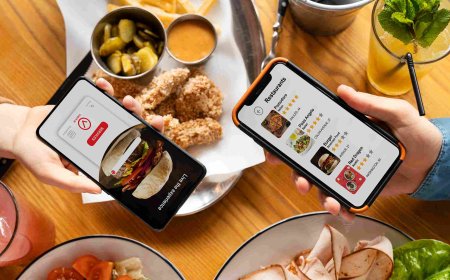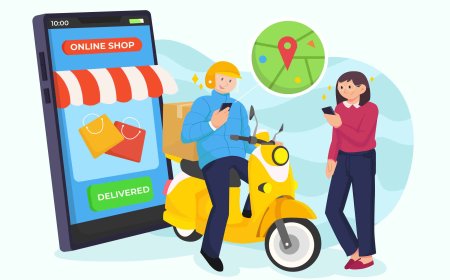How to Access Health Equity Resources
How to Access Health Equity Resources Health equity is the principle that everyone should have a fair and just opportunity to attain their highest level of health, regardless of race, ethnicity, socioeconomic status, gender, sexual orientation, disability, or geographic location. Yet, systemic barriers continue to prevent millions of individuals from accessing the care, information, and support th
How to Access Health Equity Resources
Health equity is the principle that everyone should have a fair and just opportunity to attain their highest level of health, regardless of race, ethnicity, socioeconomic status, gender, sexual orientation, disability, or geographic location. Yet, systemic barriers continue to prevent millions of individuals from accessing the care, information, and support they need to thrive. Accessing health equity resources is not merely a matter of finding a clinic or a website—it requires understanding systemic inequities, identifying culturally competent services, navigating complex systems, and advocating for oneself or one’s community. This guide provides a comprehensive, actionable roadmap for individuals, caregivers, community advocates, and healthcare professionals seeking to bridge the gap between policy and practice in health equity.
The urgency of this work cannot be overstated. In the United States, Black women are three to four times more likely to die from pregnancy-related causes than white women. Native American communities experience diabetes rates nearly twice the national average. Rural residents face longer travel times to specialists and higher rates of uninsured status. LGBTQ+ youth are more than twice as likely to attempt suicide than their heterosexual peers. These disparities are not accidents—they are the result of historical and ongoing structural inequities. But they are also solvable. Accessing the right health equity resources empowers individuals and communities to demand better, receive better, and build better systems for future generations.
This guide walks you through practical, real-world steps to identify, evaluate, and utilize health equity resources—from local community programs to national databases. You’ll learn how to overcome common barriers, avoid misinformation, and connect with organizations that center lived experience. Whether you’re navigating the system for yourself, a family member, or as part of a broader advocacy effort, this guide is designed to be your trusted companion.
Step-by-Step Guide
Step 1: Understand What Health Equity Resources Are
Before you begin searching, it’s essential to define what you’re looking for. Health equity resources encompass a wide range of services, tools, and supports designed to reduce disparities and improve outcomes for marginalized populations. These include:
- Free or low-cost medical and dental clinics
- Culturally competent mental health providers
- Language interpretation and translation services
- Transportation assistance to medical appointments
- Nutrition and food security programs
- Health education workshops in community centers
- Advocacy organizations focused on specific populations
- Government-funded programs like Medicaid expansion or WIC
- Mobile health units serving underserved neighborhoods
- Peer support networks and community health workers
These resources are not always labeled as “health equity” services. Many operate under names like “community health initiative,” “population health program,” or “social determinants of health intervention.” Recognizing the breadth of what qualifies as a health equity resource will expand your search and increase your chances of success.
Step 2: Identify Your Specific Needs and Barriers
Health equity is not one-size-fits-all. The resources you need depend on your unique circumstances. Start by asking yourself:
- What health concerns am I or my loved one experiencing?
- What barriers do I face in accessing care? (e.g., cost, transportation, language, discrimination, lack of insurance, disability access)
- What cultural, religious, or linguistic considerations are important to me?
- Do I live in an urban, suburban, or rural area? (This affects availability of services)
- Am I part of a population disproportionately affected by health disparities? (e.g., Black, Indigenous, Latino, LGBTQ+, disabled, elderly, low-income)
Writing down your answers helps clarify your priorities. For example, if you’re a non-English-speaking elderly person with mobility challenges living in a rural area, your top needs might be: transportation to a clinic that offers Spanish-speaking providers, home-based care, and assistance with Medicare enrollment. Your resource search will be far more effective when targeted.
Step 3: Research Local and Community-Based Organizations
Local organizations are often the most responsive and culturally attuned sources of health equity support. Start by identifying:
- Community health centers (CHCs) – federally funded clinics that serve low-income and uninsured populations regardless of ability to pay
- Faith-based organizations – many churches, mosques, synagogues, and temples run food pantries, health screenings, or counseling services
- Nonprofits focused on specific populations – such as the National Association of Latino Elected and Appointed Officials (NALEO) Health Initiative or the National Black Nurses Association
- Public libraries – many offer free health literacy workshops, internet access for telehealth, and connections to social services
- Local universities and medical schools – they often operate outreach programs and student-run clinics
Use search terms like “community health center near me,” “free clinic [your city],” or “[your ethnicity] health resources [your state].” Google Maps and Yelp can help locate nearby centers, but always verify services by visiting their official websites or calling directly.
Step 4: Leverage State and Federal Health Programs
Government programs are critical sources of equitable care. Key programs include:
- Medicaid – provides health coverage to low-income individuals and families; eligibility varies by state
- Children’s Health Insurance Program (CHIP) – covers children in families that earn too much for Medicaid but can’t afford private insurance
- Section 330 of the Public Health Service Act – funds Community Health Centers across the country
- Health Resources and Services Administration (HRSA) – offers grants to providers serving underserved areas
- Supplemental Nutrition Assistance Program (SNAP) – helps with food access, which directly impacts health outcomes
- Indian Health Service (IHS) – provides care to federally recognized Native American and Alaska Native tribes
To apply for Medicaid or CHIP, visit your state’s health exchange website or Healthcare.gov. Many states have simplified applications for low-income populations. If you’re unsure about eligibility, contact your local Department of Social Services or visit a Community Health Center—they often have enrollment specialists who can assist.
Step 5: Connect with Community Health Workers and Navigators
Community Health Workers (CHWs) and Patient Navigators are trained individuals—often from the same communities they serve—who help people overcome barriers to care. They do not provide clinical care, but they help with:
- Scheduling appointments
- Understanding medical jargon
- Applying for benefits
- Transportation coordination
- Connecting to food, housing, or childcare resources
CHWs are employed by hospitals, clinics, nonprofits, and public health departments. To find one, ask your primary care provider, local health department, or search “community health worker [your city].” Some states, like California and New York, have statewide directories. If you’re part of a federally qualified health center (FQHC), you’re likely eligible for navigator services at no cost.
Step 6: Utilize Telehealth and Digital Tools Equitably
Telehealth has expanded access for many, but digital inequity remains a major barrier. To use telehealth effectively:
- Ensure you have a device with internet access—public libraries, community centers, and some nonprofits lend tablets or hotspots
- Ask if your provider offers phone-based visits if video isn’t feasible
- Use apps with simple interfaces and language options (e.g., MyChart, Zocdoc, or apps from the National Institutes of Health)
- Request written summaries or translated materials after virtual visits
- Be aware of privacy concerns—use secure networks and avoid public Wi-Fi for sensitive health discussions
Some organizations, like the Telehealth Innovation Alliance, offer free digital literacy training for older adults and low-income populations. These trainings can help you confidently use telehealth platforms without feeling overwhelmed.
Step 7: Advocate for Yourself and Others
Health equity is not passive—it requires active engagement. If you encounter discrimination, language barriers, or refusal of care, you have rights:
- Under Title VI of the Civil Rights Act, healthcare providers receiving federal funds must provide language assistance services
- The Americans with Disabilities Act (ADA) requires reasonable accommodations for people with disabilities
- You have the right to request a second opinion or to switch providers
- You can file a complaint with the Office for Civil Rights (OCR) at HHS if you experience discrimination
Document every interaction: note dates, names, what was said, and any promises made. If you’re not heard, escalate to a patient advocate or ombudsman within the facility. Many hospitals have patient rights offices specifically designed to assist with these concerns.
Step 8: Build a Personal Health Equity Network
Don’t rely on one source. Build a network of trusted contacts:
- A primary care provider who listens and respects your needs
- A community health worker or navigator
- A local advocacy group
- A friend or family member who can accompany you to appointments
- A peer support group (in-person or online)
Keep a health equity folder—physical or digital—with your insurance cards, provider contact info, medication lists, appointment summaries, and notes on what resources helped you. This becomes your personal roadmap for ongoing care.
Best Practices
Practice Cultural Humility, Not Just Cultural Competence
Many providers claim to be “culturally competent,” but true equity requires cultural humility—an ongoing process of self-reflection, learning, and respect for the lived experience of others. As a user of services, you can foster this by:
- Sharing your cultural beliefs and practices openly with providers
- Asking providers how they incorporate your cultural context into your care
- Seeking providers who reflect your background or have experience with your community
- Rejecting assumptions—e.g., “You must eat a lot of rice” or “All Latinos are Catholic”—and correcting them politely but firmly
Cultural humility empowers you as a partner in care, not a passive recipient.
Use Plain Language and Ask Questions
Medical jargon is a barrier to equity. Always ask:
- “Can you explain that in simpler terms?”
- “What happens if I don’t do this?”
- “Are there other options?”
- “Can I have this in writing—or in my language?”
Providers are obligated to ensure you understand. Don’t be afraid to repeat back what you heard: “So, if I take this pill every morning, it will lower my blood pressure, but I need to avoid grapefruit—is that right?”
Verify Information Before Acting
The internet is full of misinformation, especially around health. Always check:
- Is the source a government website (.gov), academic institution (.edu), or reputable nonprofit?
- Is the information current? (Health guidelines change—look for dates)
- Are claims backed by research or anecdotal stories?
- Does the site try to sell you something?
Trustworthy sources include the Centers for Disease Control and Prevention (CDC), the National Institutes of Health (NIH), the Kaiser Family Foundation, and the Health Resources and Services Administration (HRSA).
Engage in Community-Led Initiatives
Top-down solutions often fail. The most effective health equity efforts are community-driven. Look for programs where residents help design and lead services. Ask:
- Who is in charge of this program?
- Are people from the community on the board or staff?
- Have they evaluated outcomes with input from participants?
Support organizations that prioritize community voice. They’re more likely to deliver services that actually work.
Protect Your Privacy and Data
When using digital tools or sharing personal health information:
- Read privacy policies before signing up for apps or portals
- Use strong passwords and enable two-factor authentication
- Be cautious about sharing health details on social media
- Know your rights under HIPAA—the federal law protecting your medical records
Your health data is yours. You have the right to access it, correct it, and control who sees it.
Document Everything
Keep a health journal: record symptoms, medications, appointments, conversations with providers, and resources used. This helps you track progress, remember details during visits, and provide evidence if you need to appeal a denial of care.
Tools and Resources
Online Directories
- Health Resources and Services Administration (HRSA) Health Center Locator – findahealthcenter.hrsa.gov – Find federally funded community health centers near you
- Medicaid.gov – www.medicaid.gov – State-by-state eligibility and enrollment information
- FindHelp.org – www.findhelp.org – Search for food, housing, transportation, and health services by zip code
- 211.org – www.211.org – Dial 211 or visit online for free, confidential referrals to local services
- NAACP Health Equity Toolkit – www.naacp.org/latest/health-equity-toolkit/ – Resources for Black communities
- GLMA: Health Professionals Advancing LGBTQ+ Equality – www.glma.org – Provider directory for LGBTQ+-affirming care
- Disability Rights Education & Defense Fund (DREDF) – dredf.org – Legal and advocacy resources for people with disabilities
- Latino Health Access – www.latinohealthaccess.org – Programs for Latino communities, including maternal health and diabetes prevention
- Indian Health Service Facility Locator – www.ihs.gov/facilitylocator/ – Find IHS, tribal, or urban Indian health programs
Mobile Apps
- MyHealthFinder (CDC) – Personalized preventive care recommendations based on age, sex, and health status
- Healthcare Bluebook – Compares costs of procedures to help avoid overpaying
- Medisafe – Medication reminders and adherence tracking
- Healthvana – Appointment reminders and vaccine tracking
- LanguageLine Solutions App – On-demand interpretation in over 200 languages
Print and Educational Materials
- Centers for Disease Control and Prevention (CDC) Health Equity Resources – Downloadable fact sheets on chronic disease, maternal health, mental health, and more
- NIH National Institute on Minority Health and Health Disparities – Culturally tailored educational brochures in multiple languages
- Health Literacy Missouri – Free plain-language health guides
- Partnership for Patient Safety – “Ask Me 3” program: “What is my main problem? What do I need to do? Why is it important?”
Training and Certification
If you’re a healthcare worker, community organizer, or advocate:
- Community Health Worker Certification – Offered by state health departments and universities
- Health Equity Training – Provided by the National Association of Community Health Centers (NACHC)
- Cultural Humility Certificate – Available through universities like the University of Washington and the University of Minnesota
Real Examples
Example 1: Maria in Rural Arizona
Maria, a 52-year-old Latina woman with type 2 diabetes, lived in a remote town with no nearby clinic. She spoke limited English and relied on public transportation, which didn’t reach the nearest hospital. After a hospital visit where she was dismissed as “non-compliant,” she reached out to a local nonprofit, Arizona Latino Health Access. A community health worker visited her home, helped her enroll in Medicaid, arranged rides through a local faith-based shuttle service, and connected her with a bilingual diabetes educator. Within six months, Maria’s A1C dropped from 9.2 to 6.8. She now leads a monthly support group for other Latina women with diabetes.
Example 2: James, a Disabled Veteran in Detroit
James, a 68-year-old Black veteran with mobility impairments, struggled to access mental health care. He was told he had to wait three months for an appointment. He contacted the Michigan Veterans Affairs Agency, which connected him with a peer navigator from the Black Veterans for Social Justice network. The navigator helped him secure a home-based telehealth option with a therapist trained in trauma-informed care for Black veterans. He also received a free adaptive bike through a VA community partnership. James now volunteers as a peer mentor.
Example 3: The Transgender Youth Initiative in Portland
A group of transgender teens in Portland noticed that local clinics refused to provide hormone therapy without a psychiatrist’s note—which was hard to get. They partnered with a local LGBTQ+ youth center and a medical school to create a peer-led “Trans Health 101” workshop. They trained clinic staff on gender-affirming care, created a resource guide in simple language, and established a referral pathway with a local trans-led clinic. Within a year, 90% of local providers reported increased confidence in providing trans care, and wait times for hormone therapy dropped from 8 weeks to 2.
Example 4: The Food as Medicine Program in Baltimore
A hospital in Baltimore noticed high readmission rates among Black patients with heart failure. Instead of increasing medication, they launched a “Food as Medicine” program: patients received weekly boxes of fresh produce, cooking classes led by community chefs, and nutrition counseling in African American Vernacular English. After one year, hospital readmissions dropped by 40%, and patients reported improved quality of life. The program is now funded by Medicaid.
FAQs
What if I don’t have insurance? Can I still access health equity resources?
Yes. Many community health centers, free clinics, and nonprofit programs serve patients regardless of insurance status. Federally Qualified Health Centers (FQHCs) use a sliding fee scale based on income. You may pay nothing or a small amount. Programs like SNAP, WIC, and Medicaid also help cover costs.
How do I know if a resource is trustworthy?
Look for .gov, .edu, or well-known nonprofit domains. Check if the organization is transparent about funding, staff, and outcomes. Avoid sites that promise miracle cures, sell products, or lack citations. When in doubt, ask a community health worker or librarian for help verifying.
Can I get help in my language?
Yes. Federal law requires healthcare providers receiving federal funds to offer language assistance services at no cost. This includes interpreters and translated materials. You can request an interpreter at your appointment—don’t rely on family members unless you choose to.
What if I’m turned away or treated unfairly?
Document the incident, including names, dates, and what was said. Ask to speak with a patient advocate or ombudsman. You can also file a complaint with the U.S. Department of Health and Human Services Office for Civil Rights (OCR) at hhs.gov/ocr/.
Are there resources for undocumented immigrants?
Yes. Many community health centers, free clinics, and nonprofit organizations serve all individuals regardless of immigration status. Emergency care is available under federal law. Some states offer limited Medicaid coverage for pregnant women and children regardless of status. Organizations like United We Dream and the National Immigration Forum provide guidance.
How can I help my community access health equity resources?
Start by listening. Host community forums. Partner with local schools, churches, or libraries. Volunteer with or donate to organizations led by affected communities. Advocate for policy changes at city council or state legislature meetings. Share accurate information on social media. Equity grows through collective action.
Do I need to be a U.S. citizen to access these resources?
No. Many services—especially those provided by community health centers, food banks, and nonprofits—are available to all residents, regardless of citizenship status. Public health programs like immunizations and disease screening are also universally accessible.
How long does it take to get help?
It varies. Some services, like food pantries or walk-in clinics, offer immediate help. Others, like Medicaid enrollment or specialist referrals, may take weeks. Start early. Ask for timelines and follow up. Community navigators can help speed up the process.
Conclusion
Accessing health equity resources is not a single act—it’s an ongoing practice of awareness, advocacy, and connection. It requires courage to ask for help, diligence to verify information, and persistence to navigate systems not designed with you in mind. But every step you take not only improves your own health—it strengthens the entire community.
The resources outlined in this guide are not theoretical. They are real, functional, and available. From the community health worker who knocks on your door to the free clinic that opens its doors after hours, the infrastructure for equity exists. What’s often missing is the knowledge of how to find it—and the confidence to claim it.
You are not alone. Millions are walking this path before you, and countless organizations are ready to walk beside you. Use this guide as your starting point. Share it with someone who needs it. Advocate for more. Demand better. And remember: health equity is not a privilege—it is a right. And you have the power to claim it.





































